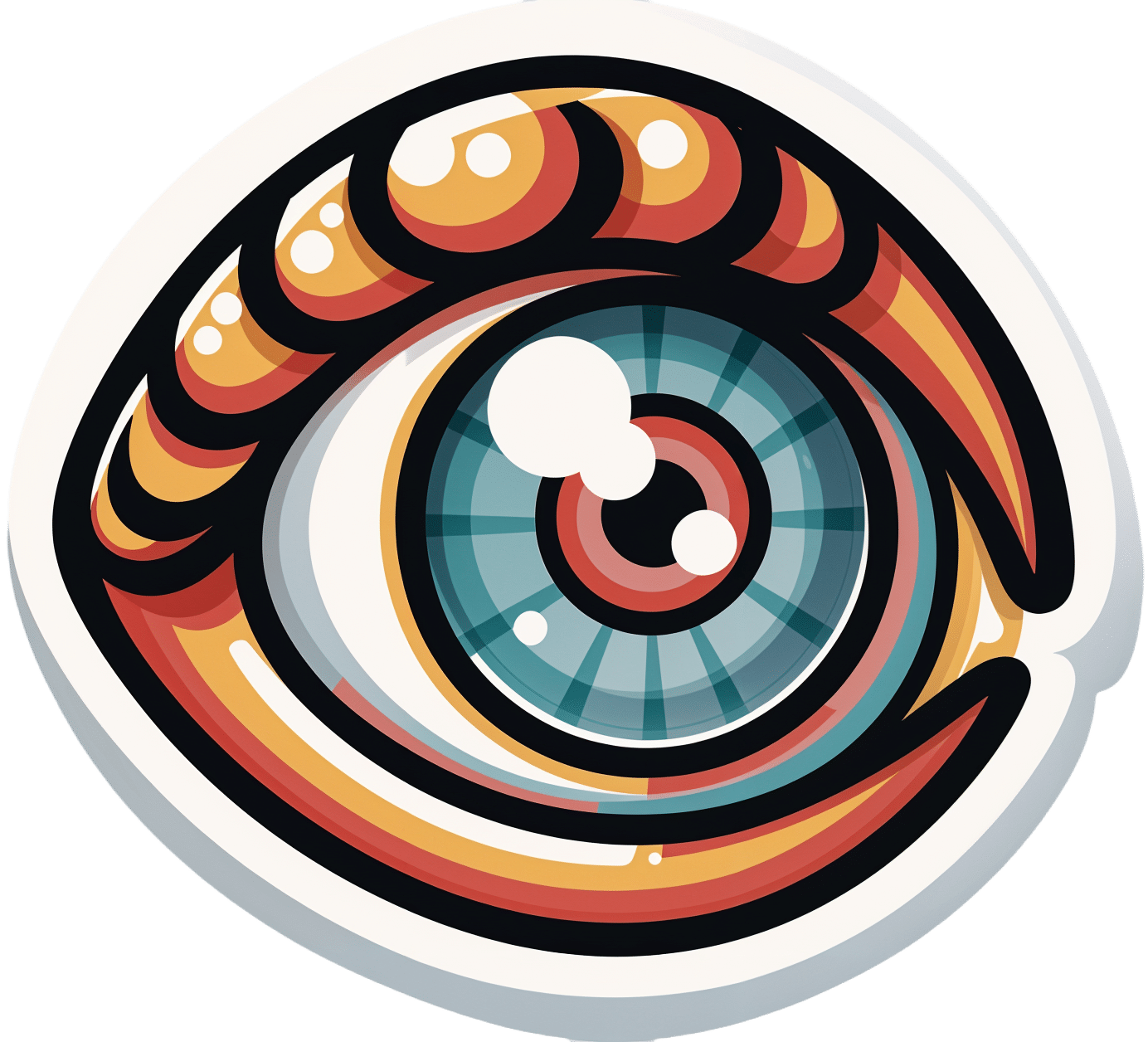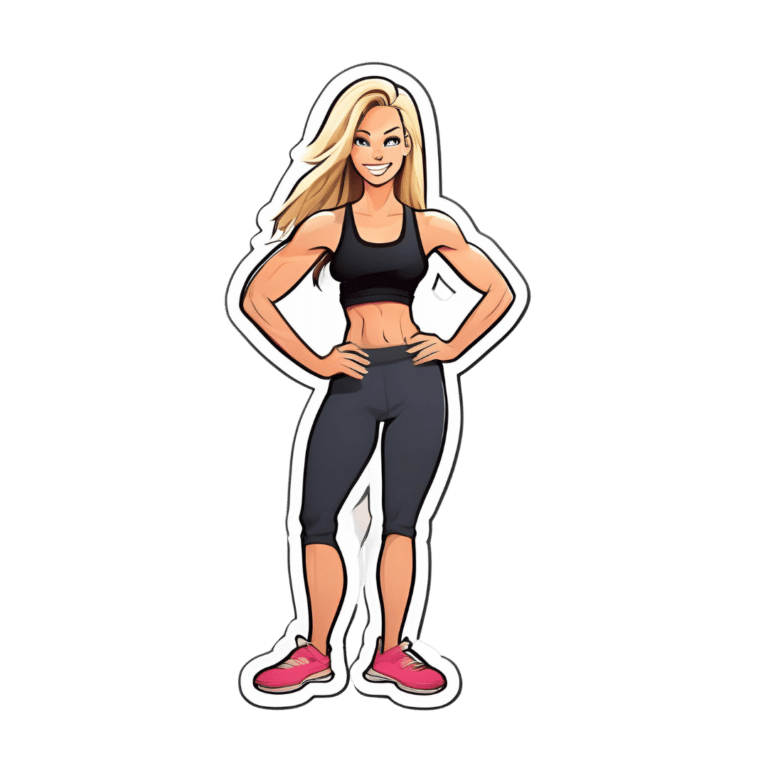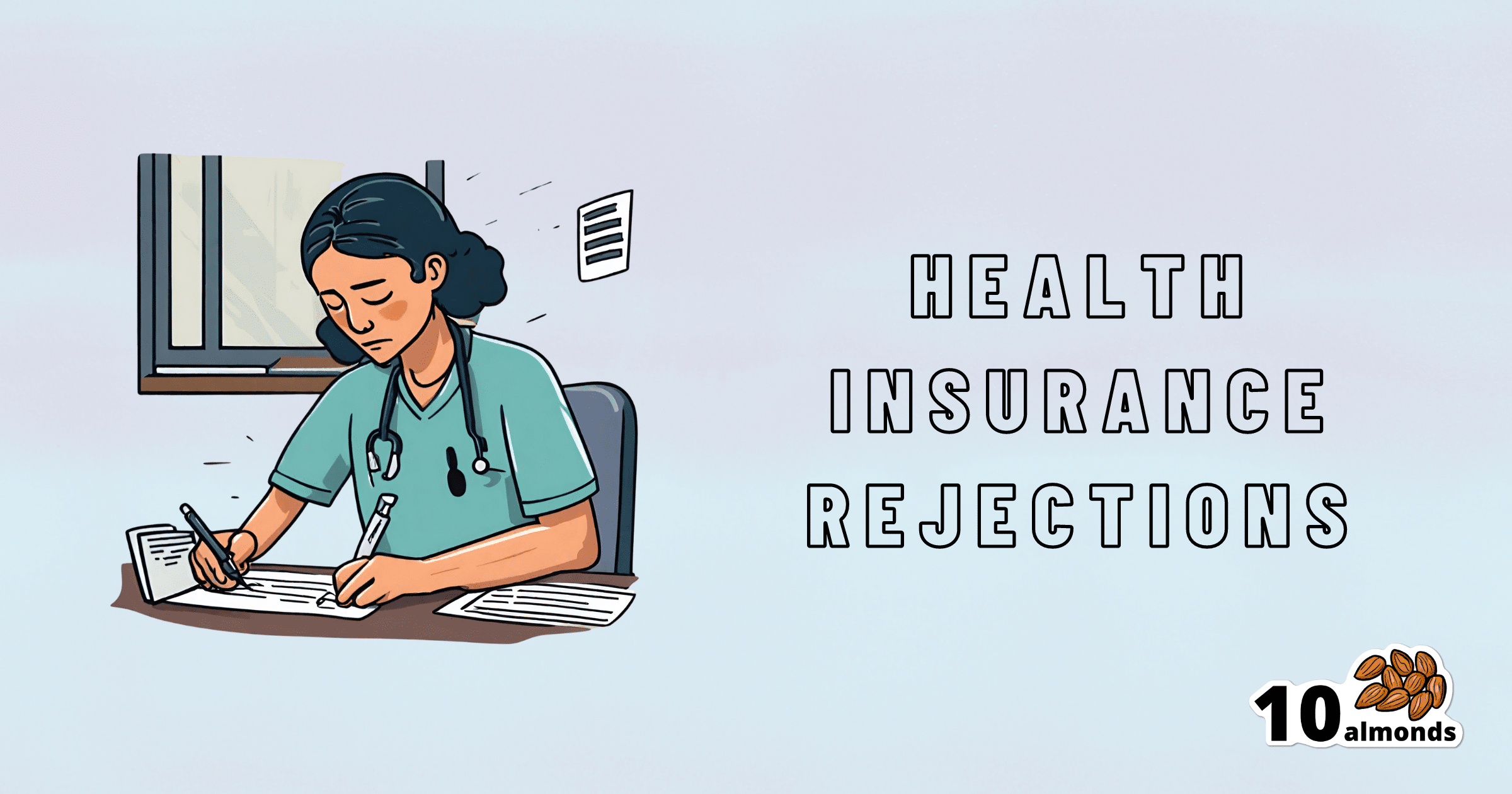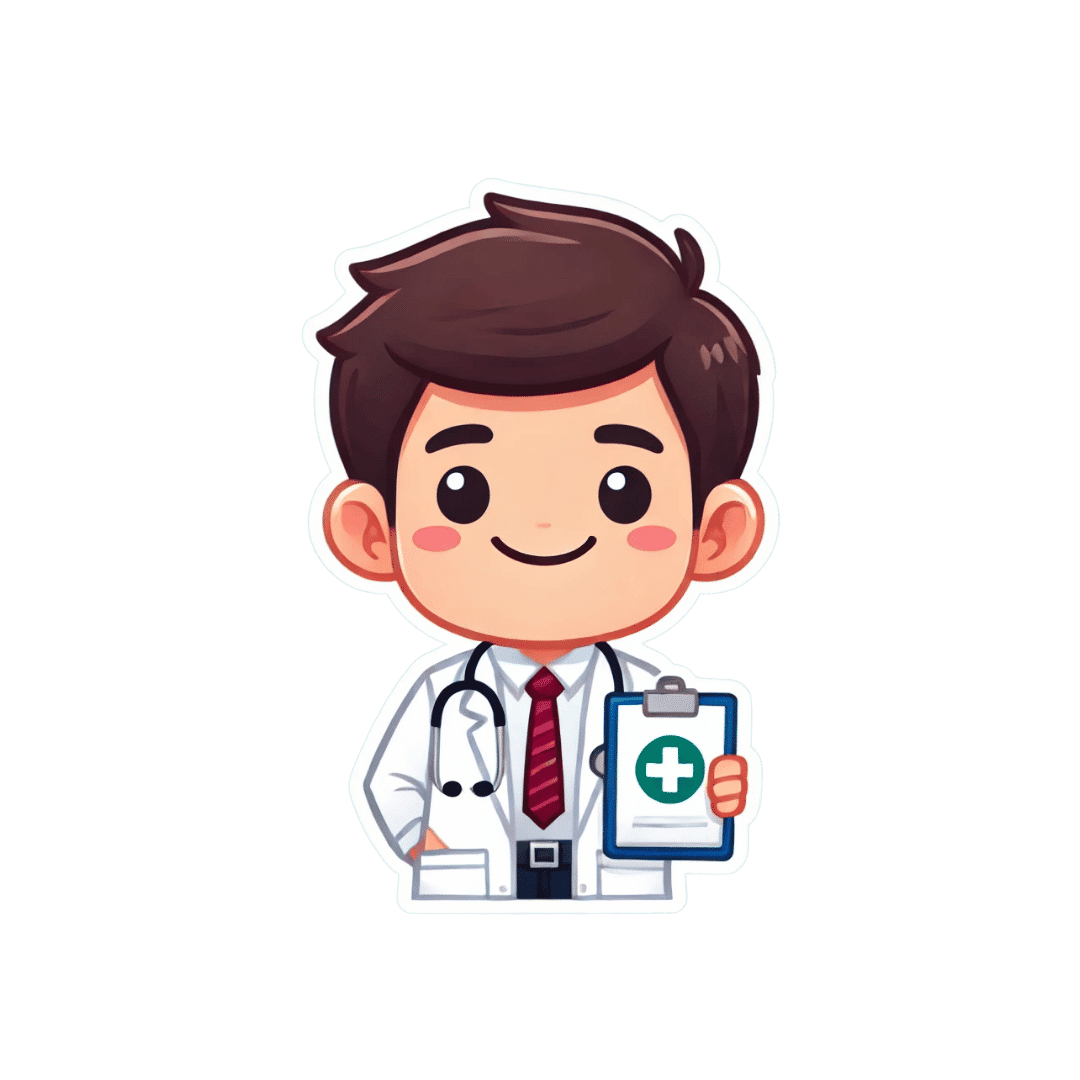
Slowing the Progression of Cataracts
10almonds is reader-supported. We may, at no cost to you, receive a portion of sales if you purchase a product through a link in this article.
Understanding Cataracts
Cataracts are natural and impact everyone.
That’s a bit of a daunting opening line, but as Dr. Michele Lee, a board-certified ophthalmologist, explains, cataracts naturally develop with age, and can be accelerated by factors such as trauma, certain medications, and specific eye conditions.
We know how important your vision is to you (we’ve had great feedback about the book Vision for Life) as well as our articles on how glasses impact your eyesight and the effects of using eye drops.
While complete prevention isn’t possible, steps such as those mentioned below can be taken to slow their progression.
Here is an overview of the video’s first 3 takeaways. You can watch the whole video below.
Protect Your Eyes from Sunlight
Simply put, UV light damages lens proteins, which (significantly) contributes to cataracts. Wearing sunglasses can supposedly prevent up to 20% of cataracts caused by UV exposure.
Moderate Alcohol Consumption
We all, at some level, know that alcohol consumption doesn’t do us any good. Your eye health isn’t an exception to the rule; alcohol has been shown to contribute to cataract development.
If you’re looking at reducing your alcohol use, try reading this guide on lowering, or eradicating, alcohol consumption.
Avoid Smoking
Smokers are 2-3 times more likely to develop cataracts. Additionally, ensure good ventilation while cooking to avoid exposure to harmful indoor smoke.
See all 5 steps in the below video:
How was the video? If you’ve discovered any great videos yourself that you’d like to share with fellow 10almonds readers, then please do email them to us!
Don’t Forget…
Did you arrive here from our newsletter? Don’t forget to return to the email to continue learning!
Recommended
Learn to Age Gracefully
Join the 98k+ American women taking control of their health & aging with our 100% free (and fun!) daily emails:
-
How gender-affirming care improves trans mental health
10almonds is reader-supported. We may, at no cost to you, receive a portion of sales if you purchase a product through a link in this article.
In recent years, a growing number of states have passed laws restricting or banning gender-affirming care for transgender people, particularly minors. As conversations about gender-affirming care increase, so do false narratives about it, with some opponents falsely suggesting that it’s harmful to mental health.
Despite widespread attacks against gender-affirming care, research clearly shows that it improves mental health outcomes for transgender people.
Read on to learn more about what gender-affirming care is, how it benefits mental well-being, and how you can access it.
What is gender-affirming care?
Gender-affirming care describes a range of medical interventions that help align people’s bodies with their gender identities. While anyone can seek gender-affirming care in the form of laser hair removal, breast augmentation, erectile dysfunction medication, or hormone therapy, among other treatments, most conversations about gender-affirming care center around transgender people, whose gender identity or gender expression does not conform to their sex assigned at birth.
Gender-affirming care for trans people varies based on age. For example, some trans adults seek hormone replacement therapy (HRT) or gender-affirming surgeries that help their bodies match their internal sense of gender.
Trans kids entering adolescence might be prescribed puberty blockers, which temporarily delay the production of hormones that initiate puberty, to give them more time to figure out their gender identities before deciding on next steps. This is the same medication given to cisgender kids—whose gender identities match the sex they were assigned at birth—experiencing early puberty.
What is gender dysphoria?
Gender dysphoria describes a feeling of unease that some trans people experience when their perceived gender doesn’t match their gender identity. This can lead to a range of mental health conditions that affect their quality of life
Some trans people may manage gender dysphoria by wearing gender-affirming clothing, opting for a gender-affirming hairstyle, or asking others to refer to them by a name and pronouns that authentically represent them. Others may need gender-affirming care to feel at home in their bodies.
Trans people who desire gender-affirming care and have not been able to access it experience psychological distress, including depression, anxiety, self-harm, and suicidal ideation. The Trevor Project’s 2023 U.S. National Survey on the Mental Health of LGBTQ Young People found that roughly half of trans youth “seriously considered attempting suicide in the past year.”
How does gender-affirming care improve mental health?
For trans adults, gender-affirming care can alleviate gender dysphoria, which has been shown to improve both short-term and long-term mental health. A 2018 study found that trans adults who do not undergo HRT are four times more likely to experience depression than those who do, although not all trans people desire HRT.
Extensive research has shown that gender-affirming care also alleviates gender dysphoria and improves mental health outcomes in trans kids, teens, and young adults. A 2022 study found that access to HRT and puberty blockers lowered the odds of depression in trans people between the ages of 13 and 20 by 60 percent and reduced the risk of self-harm and suicidal thoughts by 73 percent.
Both the Endocrine Society—which aims to advance hormone research—and the American Academy of Pediatrics recommend that trans kids and teens have access to developmentally appropriate gender-affirming care.
How can I access gender-affirming care?
If you’re a trans adult seeking gender-affirming care or a guardian of a trans kid or teen who’s seeking gender-affirming care, talk to your health care provider about your options. You can find a trans-affirming provider by searching the World Professional Association for Transgender Health directory or visiting your local LGBTQ+ health center or Planned Parenthood.
Some gender-affirming care may not be covered by insurance. Learn how to make the most of your coverage from the National Center for Transgender Equality. Find insurance plans available through the Marketplace that cover gender-affirming care in some states through Out2Enroll.
Some states restrict or ban gender-affirming care. Learn about the laws in your state by visiting the Trans Legislation Tracker.
Where can trans people and their families find mental health support?
In addition to working with a trans-affirming therapist, trans people and their families can find mental health support through these free services:
- PFLAG offers resources for families and friends of LGBTQ+ people. Find a PFLAG chapter near you.
- The Trevor Project’s hotline has trained counselors who help LGBTQ+ youth in crisis. Call the TrevorLifeline 1-866-488-7386 or text START to 678-678.
- The Trans Lifeline was created by and for the trans community to support trans people in crisis. You can reach the Trans Lifeline hotline at 1-877-565-8860.
For more information, talk to your health care provider.
If you or anyone you know is considering suicide or self-harm or is anxious, depressed, upset, or needs to talk, call the Suicide & Crisis Lifeline at 988 or text the Crisis Text Line at 741-741. For international resources, here is a good place to begin.
This article first appeared on Public Good News and is republished here under a Creative Commons license.
Share This Post
-
Food Expiration Dates Don’t Mean What Most People Think They Mean
10almonds is reader-supported. We may, at no cost to you, receive a portion of sales if you purchase a product through a link in this article.
Have you ever wondered why rock salt that formed during the Precambrian era has a label on it saying that it expires next month? To take something more delicate, how about eggs that expire next Thursday; isn’t that oddly specific for something that is surely affected by many variables? What matters, and what doesn’t?
Covering their assets
The US in particular wastes huge amounts of food, with 37% of food waste coming from households. Confusion over date labels is a major contributor, accounting for 20% of household food waste. Many people misinterpret these labels, often discarding food that is still safe to eat—which is good for the companies selling the food, because then they get to sell you more.
Date labels were introduced in the 70s with the “open dating” system to indicate optimal freshness, not safety. These dates are often conservative, set by manufacturers to ensure food is consumed at its best quality and encourage repeat purchases. However, many foods remain safe well past their labeled dates, including shelf-stable items like pasta, rice, and canned goods, as well as frozen foods stored properly.
Some foods do pose safety risks, especially meat and dairy products, as well as many grain-based foods, all of which which can harbor harmful bacteria. Infant formula labels are strictly regulated for safety. However, most date labels are not linked to health risks, leading to unnecessary waste.
When it comes down to it, our senses of sight, smell, and taste are more reliable than dates on packaging. Some quick pointers and caveats:
- If it has changed color in some way that’s not associated with a healthily ripening fruit or vegetable, that’s probably bad
- If it is moldy, that’s probably bad (but the degree of badness varies from food to food; see the link beneath today’s video for more on that)
- If a container has developed droplets of water on the inside when it didn’t have those before, that’s probably bad (it means something is respiring, and is thus alive, that probably shouldn’t be)
- If it smells bad, that’s probably bad—however this is not a good safety test, because a bad smell may often mean you are inhaling mold spores, which are not good for your lungs.
- If it tastes different than that food usually does, that’s probably bad (especially if it became bitter, pungent, tangy, sour, or cheesy, and does nor normally taste that way).
Some places have trialled clearer labelling, for example a distinction between “expires” and merely “best before”, but public awareness about the distinction is low. Some places have trialled removing dates entirely, to oblige the consumer to use their own senses instead. This is good for the seller in a different way than household food waste is, because it means the seller will have less in-store waste (because they can still sell something that might previously have been labelled as expired).
For more on all of this, enjoy:
Click Here If The Embedded Video Doesn’t Load Automatically!
Want to learn more?
You might also like to read:
Take care!
Share This Post
-
Woman Petitions Health Insurer After Company Approves — Then Rejects — Her Infusions
10almonds is reader-supported. We may, at no cost to you, receive a portion of sales if you purchase a product through a link in this article.
When KFF Health News published an article in August about the “prior authorization hell” Sally Nix said she went through to secure approval from her insurance company for the expensive monthly infusions she needs, we thought her story had a happy ending.
That’s because, after KFF Health News sent questions to Nix’s insurance company, Blue Cross Blue Shield of Illinois, it retroactively approved $36,000 worth of treatments she thought she owed. Even better, she also learned she would qualify for the infusions moving forward.
Good news all around — except it didn’t last for long. After all, this is the U.S. health care system, where even patients with good insurance aren’t guaranteed affordable care.
To recap: For more than a decade, Nix, of Statesville, North Carolina, has suffered from autoimmune diseases, chronic pain, and fatigue, as well as a condition called trigeminal neuralgia, which is marked by bouts of electric shock-like pain that’s so intense it’s commonly known as the “suicide disease.”
“It is a pain that sends me to my knees,” Nix said in October. “My entire family’s life is controlled by the betrayal of my body. We haven’t lived normally in 10 years.”
Late in 2022, Nix started receiving intravenous immunoglobulin infusions to treat her diseases. She started walking two miles a day with her service dog. She could picture herself celebrating, free from pain, at her daughter’s summer 2024 wedding.
“I was so hopeful,” she said.
But a few months after starting those infusions, she found out that her insurance company wouldn’t cover their cost anymore. That’s when she started “raising Cain about it” on Instagram and Facebook.
You probably know someone like Sally Nix — someone with a chronic or life-threatening illness whose doctor says they need a drug, procedure, or scan, and whose insurance company has replied: No.
Prior authorization was conceived decades ago to rein in health care costs by eliminating duplicative and ineffective treatment. Not only does overtreatment waste billions of dollars every year, but doctors acknowledge it also potentially harms patients.
However, critics worry that prior authorization has now become a way for health insurance companies to save money, sometimes at the expense of patients’ lives. KFF Health News has heard from hundreds of people in the past year relating their prior authorization horror stories.
When we first met Nix, she was battling her insurance company to regain authorization for her infusions. She’d been forced to pause her treatments, unable to afford $13,000 out-of-pocket for each infusion.
Finally, it seemed like months of her hard work had paid off. In July, Nix was told by staff at both her doctor’s office and her hospital that Blue Cross Blue Shield of Illinois would allow her to restart treatment. Her balance was marked “paid” and disappeared from the insurer’s online portal.
But the day after the KFF Health News story was published, Nix said, she learned the message had changed. After restarting treatment, she received a letter from the insurer saying her diagnoses didn’t actually qualify her for the infusions. It felt like health insurance whiplash.
“They’re robbing me of my life,” she said. “They’re robbing me of so much, all because of profit.”
Dave Van de Walle, a spokesperson for Blue Cross Blue Shield of Illinois, said the company would not discuss individual patients’ cases.
“Prior authorization is often a requirement for certain treatments,” Van de Walle said in a written statement, “and BCBSIL administers benefits according to medical policy and the employer’s benefit.”
But Nix is a Southern woman of the “Steel Magnolia” variety. In other words, she’s not going down without a fight.
In September, she called out her insurance company’s tactics in a http://change.org/ campaign that has garnered more than 21,000 signatures. She has also filed complaints against her insurance company with the U.S. Department of Health and Human Services, U.S. Department of Labor, Illinois Department of Insurance, and Illinois attorney general.
Even so, Nix said, she feels defeated.
Not only is she still waiting for prior authorization to restart her immunoglobulin infusions, but her insurance company recently required Nix to secure preapproval for another treatment — routine numbing injections she has received for nearly 10 years to treat the nerve pain caused by trigeminal neuralgia.
“It is reprehensible what they’re doing. But they’re not only doing it to me,” said Nix, who is now reluctantly taking prescription opioids to ease her pain. “They’re doing it to other patients. And it’s got to stop.”
Do you have an experience with prior authorization you’d like to share? Click here to tell your story.
KFF Health News is a national newsroom that produces in-depth journalism about health issues and is one of the core operating programs at KFF—an independent source of health policy research, polling, and journalism. Learn more about KFF.
Share This Post
Related Posts
-
The Coffee-Cortisol Connection, And Two Ways To Tweak It For Health
10almonds is reader-supported. We may, at no cost to you, receive a portion of sales if you purchase a product through a link in this article.
Health opinions on coffee vary from “it’s an invigorating, healthful drink” to “it will leave you a shaking frazzled wreck”. So, what’s the truth and can we enjoy it healthily? Dr. Alan Mandell weighs in:
Enjoy it, but watch out!
Dr. Mandell is speaking only for caffeinated coffee in this video, and to this end, he’s conflating the health effects of coffee and caffeine. A statistically reasonable imprecision, since most people drink coffee with its natural caffeine in, but we’ll make some adjustment to his comments below, to disambiguate which statements are true for coffee generally, and which are true for caffeine:
- Drinking
coffeecaffeine first thing in the morning may not be ideal due to dehydration from overnight water loss. Coffeecaffeine is a diuretic, which means an increase in urination, thus further dehydrating the body.- Coffee contains great antioxidants, which are of course beneficial for the health in general.
- Cortisol, the body’s stress hormone, is generally at its peak in the morning. This is, in and of itself, good and correct—it’s how we wake up.
Coffeecaffeine consumption raises cortisol levels even more, leading to increased alertness and physical readiness, but it is possible to have too much of a good thing, and in this case, problems can arise because…- Elevated cortisol from early
coffeecaffeine drinking can build tolerance, leading to the need for morecoffeecaffeine over time. - It’s better, therefore, to defer drinking
coffeecaffeine until later in the morning when cortisol levels naturally drop. - All of this means that drinking
coffeecaffeine first thing can disrupt the neuroendocrine system, leading to fatigue, depression, and general woe. - Hydrate first thing in the morning before consuming
coffeecaffeine to keep the body balanced and healthy.
What you can see from this is that coffee and caffeine are not, in fact, interchangeable words, but the basic message is clear and correct: while a little spike of cortisol in the morning is good, natural, and even necessary, a big spike is none of those things, and caffeine can cause a big spike, and since for most people caffeine is easy to build tolerance to, there will indeed consistently be a need for more, worsening the problem.
In terms of hydration, it’s good to have water (or better yet, herbal tea) on one’s nightstand to drink when one wakes up.
If coffee is an important morning ritual for you, consider finding a good decaffeinated version for at least your first cup (this writer is partial to Lavazza’s “Dek Intenso”—which is not the same as their main decaf line, by the way, so do hold out for the “Dek Intenso” if you want to try my recommendation).
Decaffeinated coffee is hydrating and will not cause a cortisol spike (unless for some reason you find coffee as a concept very stressful in which case, yes, the stressor will cause a stress response).
Anyway, for more on all of this, enjoy:
Click Here If The Embedded Video Doesn’t Load Automatically!
Want to learn more?
You might also like to read:
Take care!
Don’t Forget…
Did you arrive here from our newsletter? Don’t forget to return to the email to continue learning!
Learn to Age Gracefully
Join the 98k+ American women taking control of their health & aging with our 100% free (and fun!) daily emails:
- Drinking
-
Pistachios vs Peanuts – Which is Healthier?
10almonds is reader-supported. We may, at no cost to you, receive a portion of sales if you purchase a product through a link in this article.
Our Verdict
When comparing pistachios to peanuts, we picked the peanuts.
Why?
The choice might be surprising; after all, peanuts are usually the cheapest and most readily available nuts, popularly associated with calories and not much else. However! This one was super-close, and peanuts won very marginally, as you’ll see.
In terms of macros, pistachios have slightly more fiber and nearly 2x the carbs, while peanuts have slightly more protein and fats. What we all as individuals might prioritize more there is subjective, but this could arguably be considered a tie. About the fiber and carbs: peanuts have the lower glycemic index, but not by much. And about those fats: yes, they are healthy, and the fat breakdown for each is almost identical: pistachios have 53% monounsaturated, 33% polyunsaturated, and 14% saturated, while peanuts have 53% monounsaturated, 34% polyunsaturated, and 14% saturated. Yes, that adds up to 101% in the case of peanuts, but that’s what happens with rounding things to integers. However, the point is clear: both of these nuts have almost identical fats.
In the category of vitamins, pistachios have more of vitamins A, B1, B2, B6, and C, while peanuts have more of vitamins B3, B5, B9, E, and choline, So, a 5:5 tie on vitamins.
When it comes to minerals, pistachios have more calcium, copper, phosphorus, and potassium, while peanuts have more iron, magnesium, manganese, selenium, and zinc. So, a marginal victory for peanuts (and yes, the margins of difference were similar in each case).
Adding up the tie, the other tie, and the marginal victory for peanuts, means a marginal victory for peanuts in total.
A quick note in closing though: this was comparing raw unsalted nuts in both cases, so do take that into account when buying nuts, and at the very least, skip the salted, unless you are deficient in sodium. Or if you’re using them for cooking, then buying salted nuts because they’re usually cheaper is fine; just soak and rinse them to remove the salt.
Want to learn more?
You might like to read:
Why You Should Diversify Your Nuts
Take care!
Don’t Forget…
Did you arrive here from our newsletter? Don’t forget to return to the email to continue learning!
Learn to Age Gracefully
Join the 98k+ American women taking control of their health & aging with our 100% free (and fun!) daily emails:
-
How the HHS impacts your community’s health
10almonds is reader-supported. We may, at no cost to you, receive a portion of sales if you purchase a product through a link in this article.
The U.S. Department of Health and Human Services is responsible for programs that impact every community in the country. But most Americans aren’t aware of the department’s scope.
“Most of the power in the agency, most of the administrative authority comes from laws that Congress has passed,” former HHS Secretary Kathleen Sebelius told NPR. She added that the HHS secretary “could redefine terms that had a huge impact on people. And that could be done all administratively, not by going back to Congress.”
HHS is comprised of 13 agencies, all of which play an important role in promoting the health of all Americans. These are just some of the ways that HHS affects people’s lives and health.
Vaccines
One of HHS’s most salient roles is developing, approving, and monitoring vaccines after they are on the market. The National Institutes of Health funds and conducts research to develop new vaccines and improve existing ones. The NIH’s Vaccine Research Center spearheads research to develop vaccines against deadly diseases like HIV/AIDS, malaria, and tuberculosis.
The Food and Drug Administration is responsible for overseeing clinical trials that test product safety and effectiveness, approving new vaccines, and monitoring the safety of all vaccines before and after approval. In conjunction with the Centers for Disease Control and Prevention, the FDA also manages the national surveillance systems that record and flag potential vaccine side effects.
In addition to safety monitoring, the CDC conducts research on vaccine safety and effectiveness and issues vaccination guidance. The agency’s recommended immunization schedule guides school and child care vaccination requirements and health care provider recommendations nationwide.
Although the CDC does not have the authority over school and childcare vaccination requirements at the state level, changes to the agency’s recommendations could have wide-ranging impacts.
“If this recommendation changes, there’s downstream effects, like insurance companies could stop covering them. And adding cost could easily deter uptake,” epidemiologist and creator of the Your Local Epidemiologist newsletter Katelyn Jetelina told PBS.
However, CDC vaccine recommendations are just that: recommendations. The agency cannot dictate, for example, vaccine requirements for school enrollment. Those standards are set at the state level, with the possible exception during a national public health emergency.
Drug safety
The FDA oversees all clinical trials in the United States. Every prescription drug and many medical products undergo a rigorous, closely regulated, multistep trial to test their safety and effectiveness. At the end of that process, the FDA determines whether a drug meets its standards for approval. Without FDA approval, a drug cannot be sold in the U.S.
Like with vaccines, the FDA monitors potential safety concerns related to over-the-counter and prescription medications, medical devices, and other products the agency regulates. Health care providers, FDA-regulated companies, and patients can report suspected safety issues to the agency, which evaluates each report for further investigation.
The FDA also alerts the public to safety concerns related to medical products by releasing safety notices, adding warning labels, and issuing drug recalls.
Pandemic and public health emergency response
Several HHS agencies are tasked with preventing, preparing for, and responding to disease outbreaks. This responsibility includes tracking potentially dangerous infectious diseases in the U.S. and globally, developing pandemic response strategies, and issuing guidance to contain ongoing outbreaks.
Both the CDC and FDA inform the public about public health concerns, including pandemics. The Administration for Strategic Preparedness and Response works with communities, medical facilities, local and state governments, and industry partners to enhance responses to disasters and public health emergencies.
The CDC also tracks pathogens like the flu, norovirus, and sexually transmitted infections to better understand where diseases are spreading, how they are evolving, and how best to prepare for outbreaks.
In the event of a public health emergency, the CDC may issue guidance on how to stay safe and minimize health impacts. For example, in January, the agency released tips on how to protect against smoke during the wildfires affecting southern California and how to avoid frostbite and hypothermia, as extreme cold weather affected much of the country.
The FDA can issue emergency use authorizations, which allow the use of “unapproved medical products or unapproved uses of approved medical products … to diagnose, treat, or prevent serious or life-threatening diseases … when certain criteria are met” during public health emergencies. These authorizations help ensure that the standard FDA approval process is not a barrier to the public receiving lifesaving medical products, such as authorizing specific vaccines during a pandemic.
Food and water safety
The FDA, along with the U.S. Department of Agriculture, plays an important role in regulating food safety. The agency approves and monitors the safety of food additives, like sweeteners, dyes, and preservatives. It also regulates how food is prepared, packaged, and stored, including conducting inspections of food facilities and farms.
FDA food safety testing detects dangerous foodborne illnesses like salmonella and E. coli. For example, in late December 2024, the FDA began testing raw (unpasteurized) milk products for bird flu contamination. The CDC investigates outbreaks of foodborne illnesses and, along with the FDA and USDA, provides the public with information about food safety.
The FDA also regulates most food labels, including nutrition facts, ingredient lists, and health claims on food packaging. In January, the agency proposed new front-of-package nutrition labels that highlight sugar, fat, and sodium content in packaged food products.
HHS and the USDA are responsible for updating the Dietary Guidelines for Americans, which are updated every five years. These guidelines are the basis of all federal food assistance programs for children, older adults, and low-income families.
HHS sets the guidelines for the maximum fluoride level in drinking water and periodically makes recommendations about fluoride levels. However, the department has no authority to require or ban fluoridation, which is regulated at the state and local level. U.S. cities began adding fluoride to drinking water in the 1940s to improve dental health and reduce cavities by 25 percent.
Health care access
The HHS secretary regulates the Centers for Medicare & Medicaid Services, which provides health insurance to adults 65 and older, people with disabilities, low-income families, and eligible children through the Children’s Health Insurance Program. Together, Medicare, Medicaid, and CHIP insure over 145 million Americans, or roughly 42 percent of the U.S. population. Changes to either of these programs could impact health care access and quality for millions of Americans.
This article first appeared on Public Good News and is republished here under a Creative Commons license.
Don’t Forget…
Did you arrive here from our newsletter? Don’t forget to return to the email to continue learning!
Learn to Age Gracefully
Join the 98k+ American women taking control of their health & aging with our 100% free (and fun!) daily emails:








